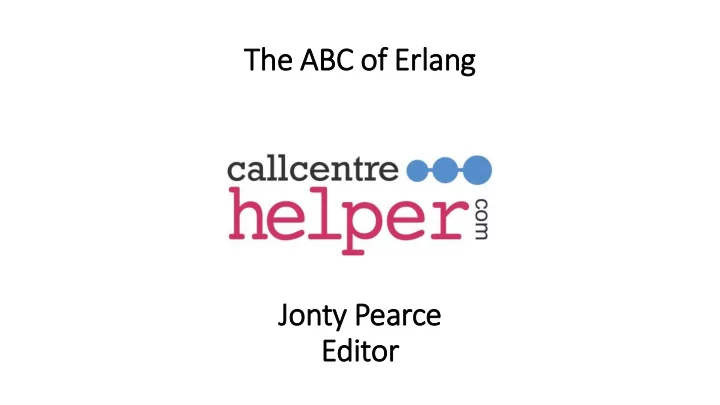

The ABC of Erlang Jo Jonty Pearce Editor
The ABC of Erlang • In Historical Order • Erlang B • Erlang C • Erlang A
Erlang B • Invented by AK Erlang (Danish Mathematician) • Works out the Percentage of Blocking in a Phone System • Used mainly to work out how many lines you require in a contact centre • Today, of limited use, but forms the foundation for Erlang C
Erlang C • Named after the Danish Mathematician A.K. Erlang, who developed the Erlang C in 1917. • Works out the probability that a call has to wait in a contact centre • Can convert a number of calls, AHT and service level into a number of staff required • Robust and in widespread use • https://www.callcentrehelper.com/erlang-c-formula-example-121281.htm
Erlang A • Erlang A (the A stands for abandons) formula is an extension of Erlang C • Was developed by Swedish Mathematician Conny Palm in 1946 • Works out the percentage of calls that will abandon based on an average patience time • Erlang A tends to under estimate the number of agents required Good paper here http://ie.technion.ac.il/serveng/References/Erlang_A.pdf
Average Patience https://www.callcentrehelper.com/how-to-bring-down-your-call-abandon-rates-50805.htm
Be Careful with Maximum Occupancy • Don’t confuse Occupancy with Efficiency! 85% • If your occupancy is higher than 85% you will • Increase Burnout • Leading to Increased Attrition and Absence • Agents picking-up undesirable behaviours on calls • Increase your AHT (this is often hidden)
Erlang Calculations • Erlang A • Erlang C • Maximum Occupancy • Average Patience • Abandon Rates • All built into the Erlang Calculator • https://www.callcentrehelper.com/tools/erlang-calculator/
Erlang Calculator https://www.callcentrehelper.com/tools/erlang-calculator/
The ABC of Erlang Jo Jonty Pearce Editor
Recommend
More recommend